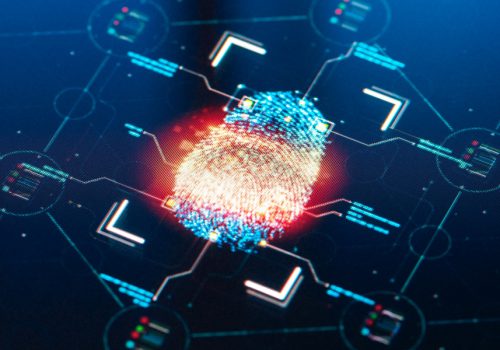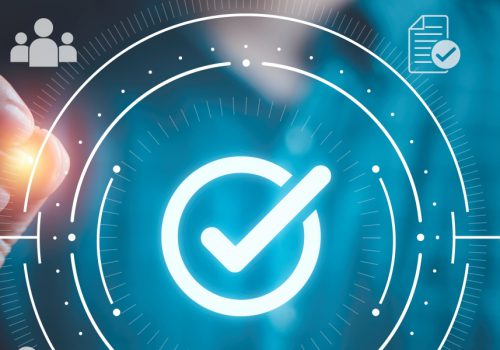Data protection involves procedures and processes developed and implemented to protect personal data in a computer system or network. It involves protecting data from loss through several ways, including backup and recovery.
Data security is the practice of protecting data, and there are several methods adopted to protect data against corruption, loss, and compromise. Different tools can be used to enforce data security, some of which are data protection laws and frameworks.
Data protection laws help to ensure that data is used correctly and legally by authorized users. Having a robust data protection/privacy program helps build trust with organizations and customers, which translates to customer loyalty and increased profit.
Consumers are getting more aware of where their data is stored and how secure it is with merchants.
Legal hacking, also known as ethical hacking, involves breaking into computers and devices mainly to test or access the set defenses. The goals and scope of the legal hacking will be set before the hacking.
It enables organizations to identify vulnerabilities and improve or develop technology to reduce, mitigate, or resolve risk.
This article will further explain the relationship between data protection and legal hacking. As you read further, you will also get answers to questions like:
- What do data protection guidelines do to ensure an effective data protection program?
- How can data protection prevent illegal hacking?
- Are there security controls for data that organizations should comply with?
- Can legal hacking be used to protect data – and how?
The evolution of data
The evolution of the internet and international trading has enabled faster and easier transfer of personal data across organizations, countries, and continents. The increase in the dissemination of data has led to a need to protect personal data from falling into the hands of malicious attackers. This has led to the creation of data protection laws and binding frameworks.
Data is a valuable asset irrespective of who has access to it, i.e. authorized and unauthorized users. Data breaches come at a very expensive cost to organizations, leading to reputational damage, legal action, downtime, and reduction in customer loyalty and patronage. There is no limit to the effect of a data breach on affected individuals, some of which are humiliation, financial loss, physical or psychological damage, or threat to life. Data privacy is a fundamental human right for data subjects (owners of data), while it is a legal and moral obligation of organizations to their customers.
What is personal data?
Personal data is any information that can be used to identify an individual. This includes some types of personal data that are deemed sensitive. Some examples of this include a data subject’s health history, sexual orientation, and race. This type of data can be used to exploit, profile and discriminate against individuals. It is the most sought type of data for enterprises and people with malicious intents.
Who is at risk?
Everyone and all organizations are at risk. Having a smartwatch, Facebook profile, Instagram, and LinkedIn profile indicates that your personal information is being shared online and offline. Identifying specific platforms on which your data is shared can be difficult to trace. This makes it essential for organizations to ensure that there is a robust data protection/privacy program in place to protect customers’ data.
What is a data breach?
A data breach is deemed to have occurred when there is a security violation leading to confidential, sensitive, or protected data being exposed to an unauthorized person. It indicates that there is a loss of control of a computer system or network as a result of a cyberattack which usually leads to fines.
According to IBM, the global average cost of a data breach for 2021 is $4.24 million, making it the highest average total cost in the 17-year history of this report.

Data protection threats
Cyberattack is one of the threats to data, and there are different types of it. A cyberattack is a malicious and deliberate attempt by an individual or organization to breach the information system of another individual or organization. A cyberattack is also theft, exposure, alteration, and destruction of data through unauthorized access.
Data protection laws
There are data protection laws and binding frameworks developed that help to ensure that data is protected. These laws help secure data while ensuring its availability for business purposes without compromising the data subject’s privacy.
The EU GDPR is Europe’s data privacy and security law with requirements for organizations around the world. The GDPR imposes laws on organizations that target or collect data related to people in the E.U. Different countries have different data protection laws, which is essential with privacy and security regulations, constantly evolving to match up with evolving data risks.
Since data is highly sought after, there must be adequate security from the inception of the collection of data. The GDPR has a framework that can be used to ensure that data is protected from compromise, and if compromised, has little impact.
One of such frameworks is the data protection principle, which is:
- Lawfulness, fairness, and transparency
- Purpose limitation
- Data minimization
- Accuracy
- Storage limitation
- Integrity and confidentiality
- Accountability
This guide ensures that when data is collected, it is limited and specific to the purpose of collection. Applying this will also ensure that there is a solid foundation for data protection measures.
How can data protection prevent illegal hacking?
We talked earlier about the data protection principles that help provide a solid foundation for data collection. After collecting data, the next question that comes to mind is how we can protect data that has been collected.
GDPR recommends that there should be a risk assessment for data collected. This is essential for identifying the right security to protect personal data.
It also recommends that technical and organizational measures be taken as well.
In order to ensure that the appropriate security is in place for data, the following should be considered:
- Nature of data
- Context of data
- Purpose of data
- Scope of data
These questions should be answered for all types of data collected by organizations. A risk assessment may be required to be able to answer these questions. Identification of the appropriate security measure for protecting data will be a decision made by the information security, data protection team, and other relevant stakeholders.
Security controls for data that organizations should comply with
Having an effective data security program does not end with designing and implementing one but also with having controls in place to ensure its effectiveness. Notable security control attributes are:
- Confidentiality: Data is available on a need to know basis
- Integrity: Data is complete and accurate
- Availability: Data should be accessible when needed
- Resilience: Data can withstand and recover from errors or threats
These attributes, when implemented, guide towards ensuring that an organization’s data security is robust and controls are in place to ensure data security in place protect data from unauthorized access, compromise, and illegal hacking.

Legal hacking
At first thought, the term ‘hacker’ or ‘hacking’ connotes a wrongful act punishable by law. This, however, is not always the case.
A hacker is a person that uses technical knowledge to achieve a goal. With reference to data security, a hacker is someone that uses computer programming skills to disrupt computer security in a controlled environment.
There are different types of hacking, such as illegal hackers whose sole aim is to act maliciously, steal, exploit and sell data. They access data unauthorized.
The other type of hacker is the legal hacker (also called an ethical hacker) who works to keep data safe from other hackers, by finding vulnerabilities in the system. A legal hacker works with the system owner’s consent and reports on findings to the system owner. A legal hacker accesses data authorized.
Benefits of Legal Hacking:
- Improvements to law and legal policies
- Improvements to technology
How legal hacking can help protect data
Legal hacking identifies existing threats to data and areas within an organization’s system or network that illegal hackers can exploit. Legal hackers submit their findings to system owners and also identify how threats can be resolved or mitigated.
Legal hackers hold conferences, workshops and create opportunities to train and educate legal and other non – IT professionals to provide them with a different perspective to address policy issues around data protection laws and legal services delivery. The findings of legal hackers also help to develop legal policies. That can help implement laws that will protect data subjects and also make illegal hackers accountable.
Legal hacking is a form of risk assessment, recommended to be a continuous exercise.
By virtue of this description, legal hacking is a form or tool of data security as the findings of a legal hacker can be used to develop and also improve established security for data protection, eliminate vulnerabilities, and improve security measures and control, which will lead to tightened technological security and effective data protection.
This analogy clarifies that legal hacking is a method of identifying risk, and identifying risk for adequate remediation is one of the goals of data security and data security is a practice of data protection.









